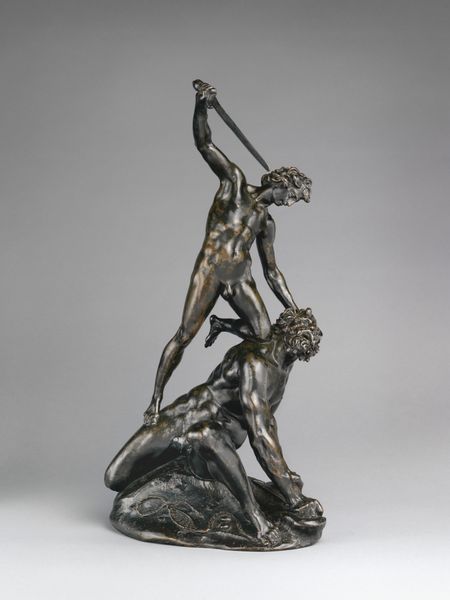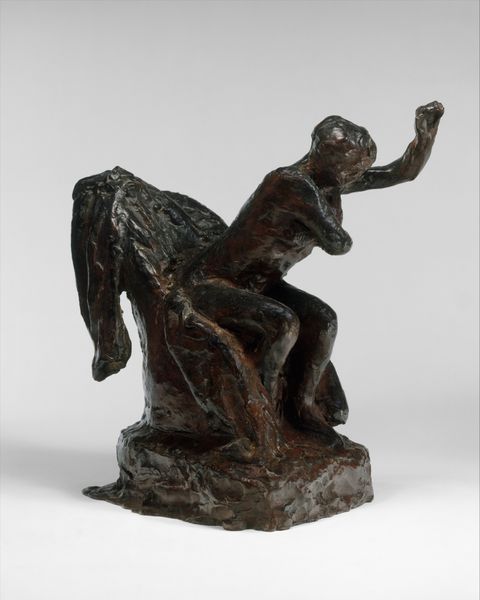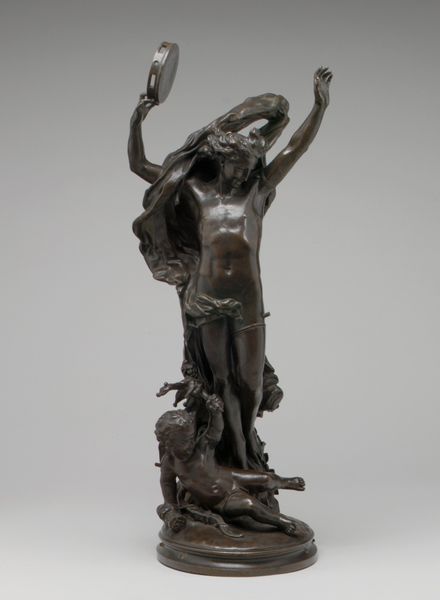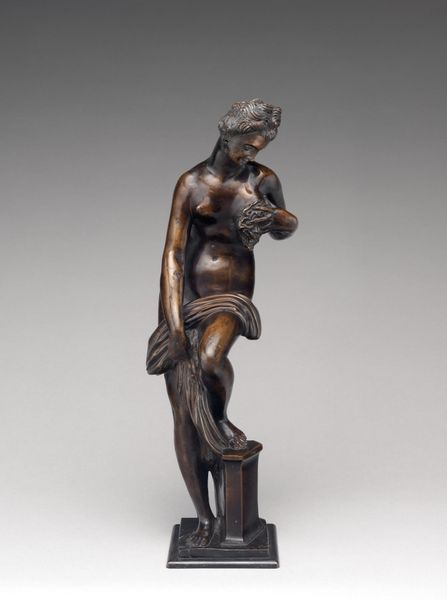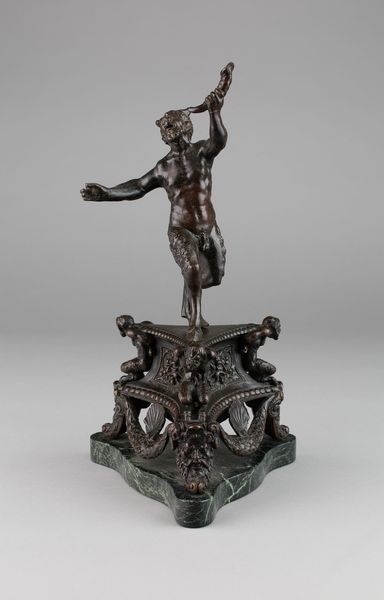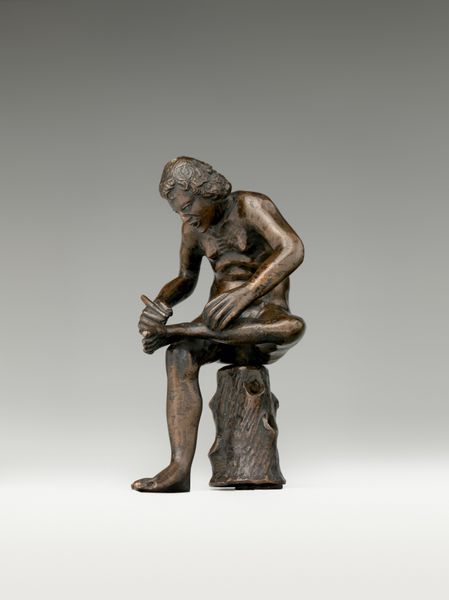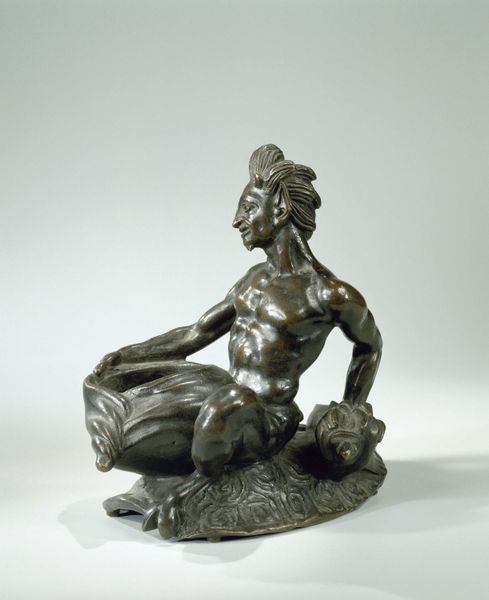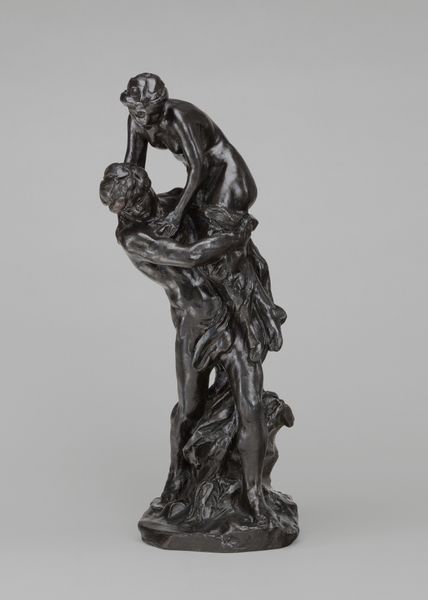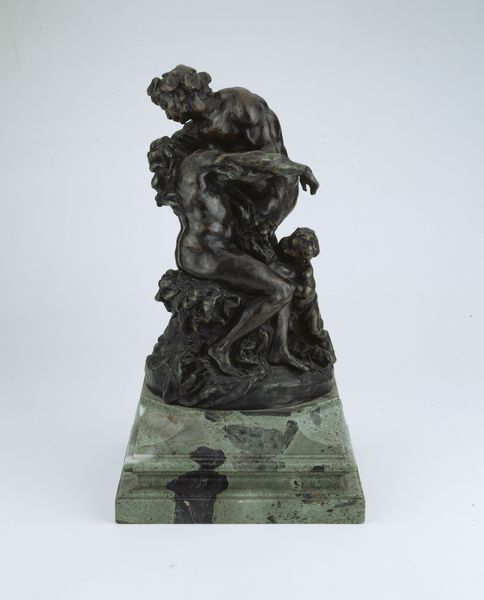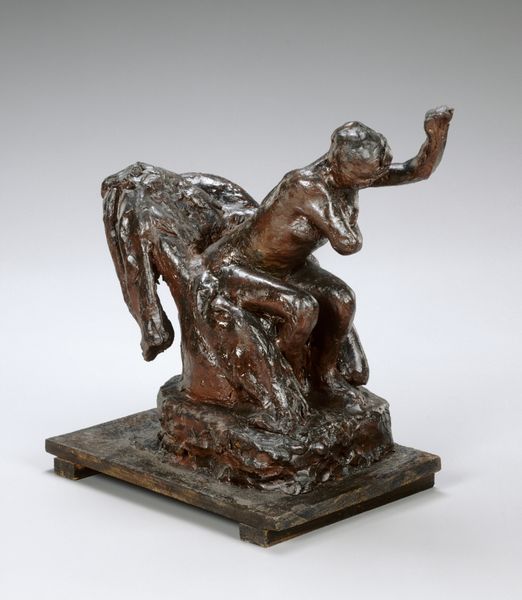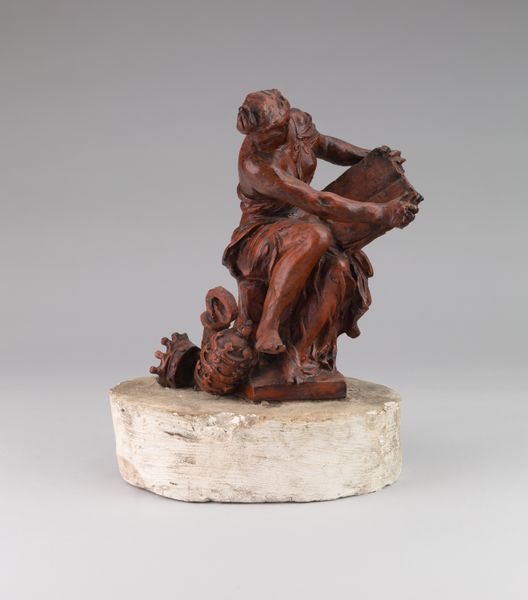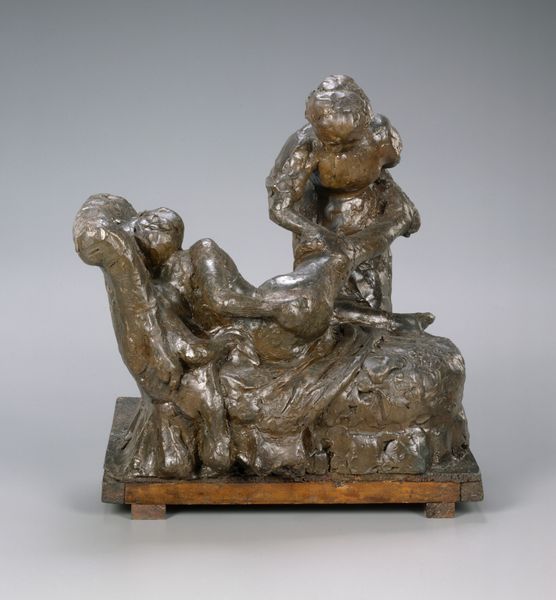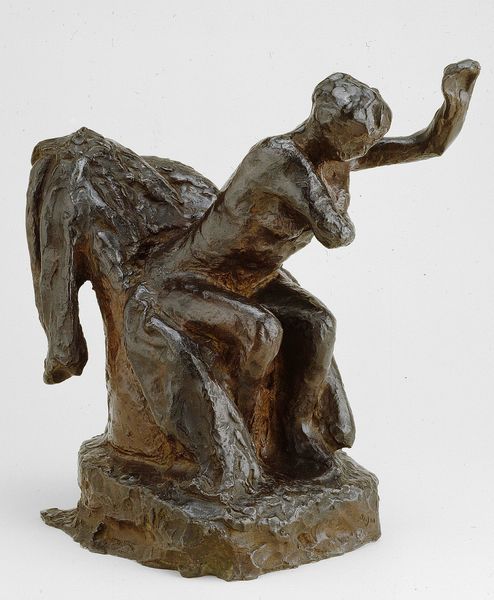
bronze, sculpture
#
sculpture
#
classical-realism
#
bronze
#
figuration
#
sculpture
#
history-painting
#
academic-art
#
decorative-art
#
nude
Dimensions: Overall (confirmed): 19 1/4 × 8 1/2 × 6 1/2 in. (48.9 × 21.6 × 16.5 cm).
Copyright: Public Domain
Editor: Here we have a 19th-century bronze sculpture, Hercules and Cacus, currently residing at the Metropolitan Museum of Art. The depiction of intense struggle makes it immediately captivating. How do you interpret this piece? Curator: The image seethes with cultural memory, doesn't it? Consider the persistent iconography of the hero vanquishing the monstrous. Hercules, the epitome of masculine strength, is forever battling these bestial forces that threaten civilization. Notice how Cacus, the fire-breathing giant, is rendered not as a mere physical opponent, but as a symbol of primordial chaos. The fire that Cacus breathed is symbolic, representing raw and uncontrolled emotions, a force that civilization strives to regulate. How does this dynamic of order versus chaos resonate with you? Editor: It's a clear dichotomy, right? Hercules represents reason and strength, while Cacus is just brute force. Is there something else to read in this opposition? Curator: Precisely. Beyond the physical struggle, we see the eternal conflict between higher consciousness and base instinct. Think about the symbolic weight of the lion skin Hercules wears, a direct reference to his earlier triumph over the Nemean Lion. What does that repeated victory signify to you? Editor: So, it’s like a reinforcement of his heroic identity and a reminder that he’s overcome primal fears before? Curator: Indeed! This statue isn't just about a single battle; it's about the ongoing effort to contain the chaotic elements within ourselves and society. Each generation interprets and reinvents this struggle, renewing the symbolic power of Hercules. It's about how these symbols continue to function within our cultural narrative. Editor: I see, the statue then represents not just an action, but also how such themes have impacted culture for centuries! Curator: Exactly! We use cultural memory, expressed through such powerful symbols to navigate current and past dilemmas, which shape how we confront the present.
Comments
No comments
Be the first to comment and join the conversation on the ultimate creative platform.
